When faced with a locked door knob that needs dismantling, it can seem like a daunting task. Whether you’ve misplaced the key, the lock is malfunctioning, or you’re simply replacing the hardware, understanding the correct steps is essential.
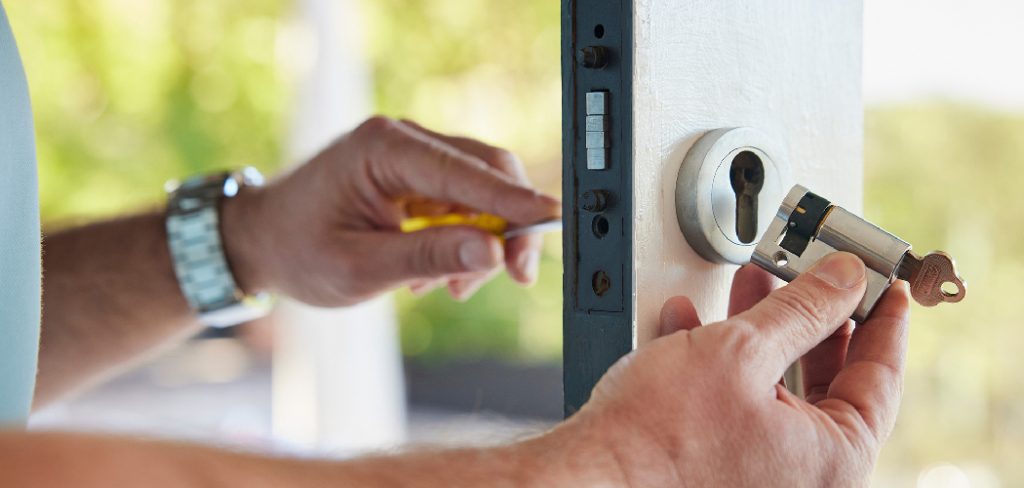
This guide on how to dismantle a locked door knob will walk you through the process safely and effectively, using common tools to ensure minimal damage and hassle. With a little patience and the right approach, you’ll be able to tackle the challenge with confidence.
Safety Precautions
When it comes to dismantling a locked door knob, safety should always be your top priority. Before you begin, make sure to take the necessary precautions to protect yourself and others from potential harm.
Wear Protective Gear:
It’s important to wear gloves and eye protection when handling hardware, as well as any other necessary protective gear depending on the tools you’ll be using. This will help prevent any injuries from occurring.
Secure the Area:
Ensure that the area around the door is clear and free of any obstacles. This will give you enough space to work and minimize the risk of accidents or injuries.
Use Proper Tools:
Using the right tools for the job is crucial in safely dismantling a locked door knob. Make sure all tools are in good working condition and appropriate for the task at hand.
Follow Instructions:
Be sure to carefully read and follow any instructions provided by the manufacturer or other reliable sources. This will ensure that you understand each step of the process and avoid potential mistakes or accidents.
Tools You May Need
When dismantling a locked door knob, having the proper tools at hand is essential. Below is a list of tools you might need for the task:
Screwdriver (Flathead and Phillips):
Used to remove screws securing the door knob and access internal mechanisms. Make sure to use the right type and size of screwdriver as using the wrong one can damage the screws.
Pliers:
Used to grip, twist or pull out various components such as screws or small pins. Pliers come in different types so choose the specific one that will work best for your door knob.
Hammer:
Can be used to tap or gently knock certain parts loose. However, exercise caution when using a hammer as excessive force can cause damage.
Allen Wrench (Hex Key):
If your door knob has hexagonal shaped screws, then you will need an Allen wrench to loosen them. Again, make sure you have the correct size for your screws.
Screwdriver (Flathead/Phillips):
A screwdriver is necessary for removing or tightening screws, depending on the type of screws your door knob has. Make sure to have both a flathead and Phillips head screwdriver in case your door knob uses different types of screws.
Lubricant:
If you are having trouble turning the key or if your door knob feels stiff, applying some lubricant can help improve its functionality. Be sure to use a lubricant that is safe for metal surfaces.
Replacement Parts:
In case any parts of your door knob are damaged or worn out, it’s always a good idea to have replacement parts on hand. This can save you time and money, as well as prevent any inconveniences if your door knob suddenly breaks. Some common replacement parts for a door knob include screws, strike plates, and latch assemblies.
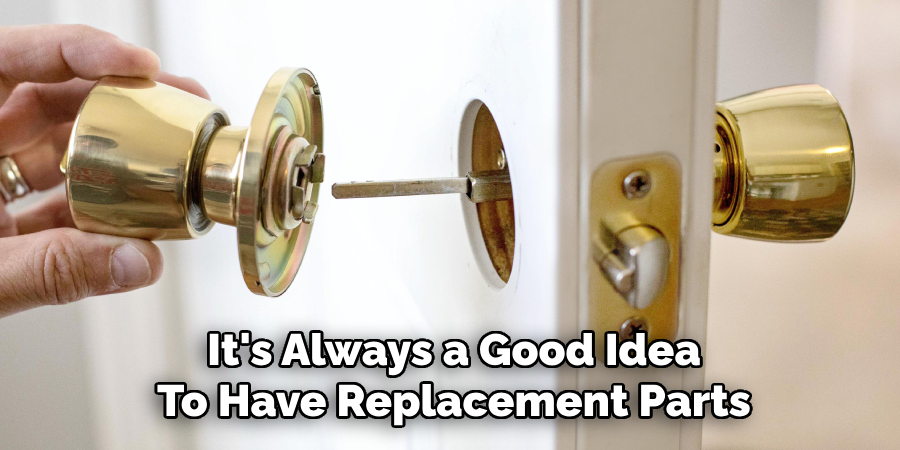
5 Simple Methods on How to Dismantle a Locked Door Knob:
Method 1: Using a Screwdriver
- Locate the screws on your door knob, usually on the interior side.
- Use a screwdriver to unscrew and remove the screws from both sides of the door knob.
- Once the screws are removed, you should be able to easily pull off both halves of the door knob.
Method 2: Push Button Locks
- If your door knob has a push button lock, locate the small hole or slot next to it.
- Insert an unfolded paper clip or a skinny tool into the hole/slot and press down firmly.
- This should release the lock mechanism and allow you to twist and remove both halves of the door knob.
- If you encounter any difficulties, try jiggling the paper clip or tool while pressing down to help release the lock.
- Once both halves are removed, you can access the screws underneath and unscrew them to completely remove the door knob.
Method 3: Removing a Door Knob with Hidden Screws
- Some door knobs may not have visible screws on the outside, but instead have hidden screws underneath or behind a small plate.
- Examine the door knob closely to see if there are any small plates that can be removed or if the entire knob casing can be twisted off.
- Use a screwdriver or similar tool to remove any plates or twist off the casing.
- Once you have access to the screws, unscrew them and remove both halves of the door knob.
- If you encounter difficulties while removing hidden screws, try using a lubricant such as WD-40 to loosen them.
Method 4: Using a Drill to Remove Stripped Screws
- If you have tried all the previous methods and still cannot remove the stripped screws from your door knob, you may need to use a drill.
- Use a drill with a small drill bit that is slightly smaller than the diameter of the screw head.
- Place the drill bit into the center of the stripped screw and apply gentle pressure while drilling in a counterclockwise direction.
- Be careful not to apply too much force or you may risk damaging the surrounding areas of the door knob.
- Once the drill has made a hole deep enough, switch to a larger drill bit and continue drilling until you reach the screw shaft.
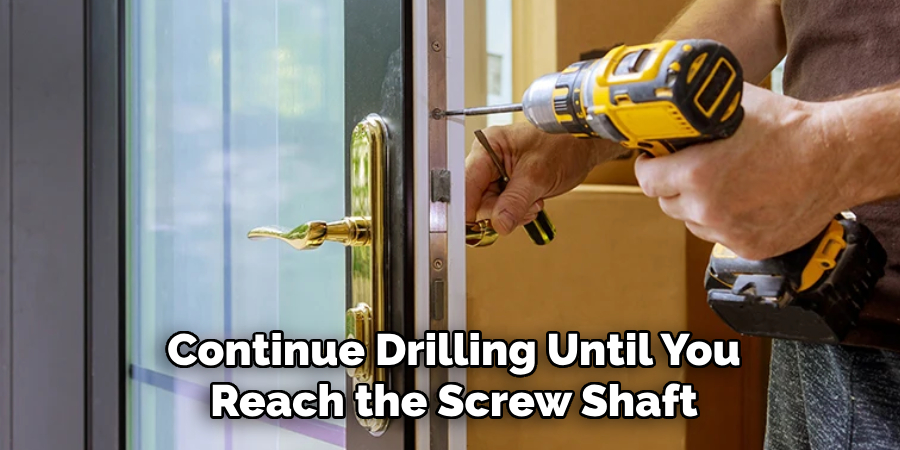
Method 5: Use a Screw Extractor
- If the above methods do not work, you can try using a screw extractor specifically designed for removing stripped screws.
- Start by drilling a small hole into the center of the screw head with a drill bit that is slightly smaller than the extractor tool.
- Place the extractor into the hole and turn it counterclockwise with pliers or a wrench to grip onto the screw.
- Continue turning until the screw is completely removed from the door knob.
- If needed, use a tap and die set to re-thread any damaged holes in the door knob for future use.
Following these steps on how to dismantle a locked door knob, you can now replace the door knob with a new one or make any necessary repairs.
Frequently Asked Questions
Q: Can I Use Any Type of Screwdriver to Remove the Screws on a Locked Door Knob?
A: It is recommended to use a #2 Phillips head screwdriver for most types of door knobs. However, some may require different types of screwdrivers such as a flathead or Allen wrench. The best way to determine the type of screwdriver needed is to check the screws on your specific door knob.
Q: What Should I Do if the Lock Mechanism Inside the Door Knob is Damaged?
A: If the lock mechanism is damaged, it may be more difficult to dismantle and replace. In this case, it might be best to call a professional locksmith for assistance. They have the necessary tools and expertise to properly repair or replace a damaged lock mechanism.
Q: Can I Reuse the Old Screws When Installing a New Door Knob?
A: It is not recommended to reuse old screws as they may have worn down or become stripped over time. It’s always best to use new screws for proper installation and secure fit. Additionally, different door knob sets may have varying screw sizes, so using the old screws may not guarantee a proper fit for the new door knob. It’s always better to err on the side of caution and use new screws during installation.
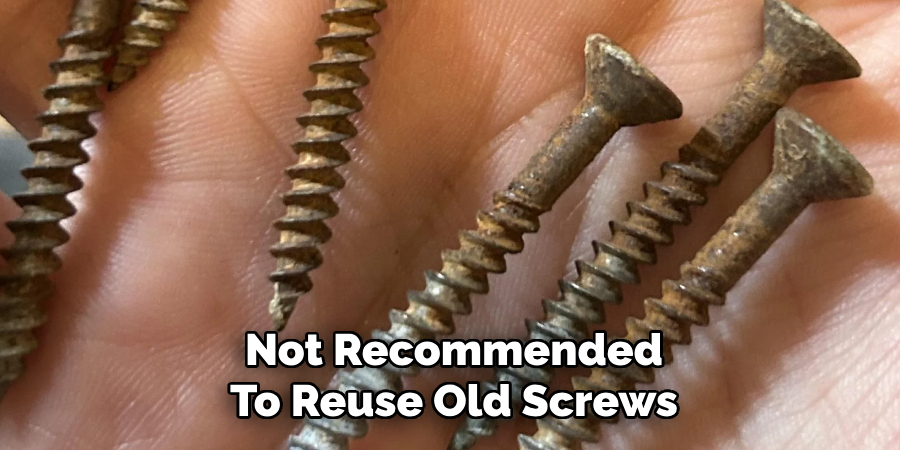
Q: What Factors Should I Consider When Choosing a Door Knob?
A: When choosing a door knob, there are several factors to consider such as the function of the door (interior or exterior), material of the door, style and design preferences, and budget. For an interior door, a basic doorknob with a simple design would suffice, while an exterior door may require a more durable and secure option.
The material of the door also plays a role in selecting a suitable door knob as some materials may require specialized hardware for proper installation. Finally, it’s important to consider personal style preferences and budget when making a decision on which door knob to choose.
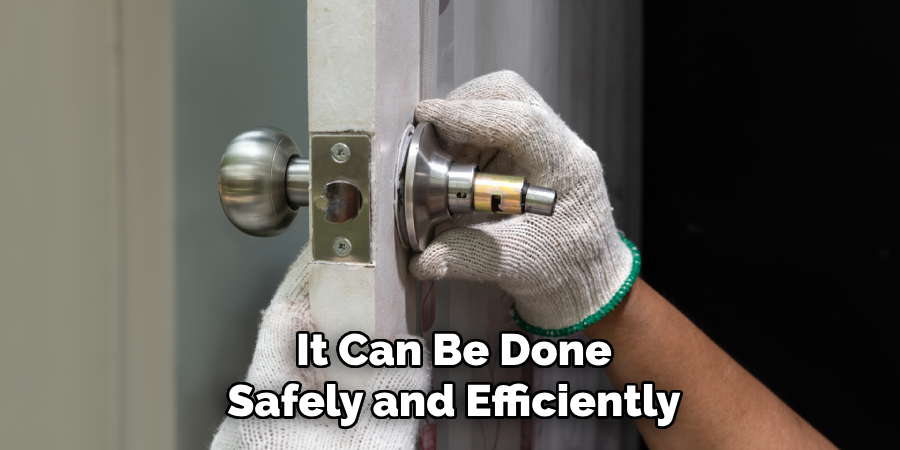
Conclusion
Dismantling a locked door knob may seem daunting, but with the right tools and proper knowledge, it can be done safely and efficiently. Remember to first assess the situation, consider all options, and proceed cautiously.
Following these steps on how to dismantle a locked door knob will not only help you successfully dismantle the door knob but also prevent any unnecessary damage or injuries. With practice and experience, handling a locked door knob will become easier and less intimidating. So don’t hesitate to take on this DIY challenge when needed!
About
Safety Fic is a distinguished figure in the world of Diy design, with a decade of expertise creating innovative and sustainable Diy solutions. His professional focus lies in merging traditional craftsmanship with modern manufacturing techniques, fostering designs that are both practical and environmentally conscious. As the author of diy, Safety Fic delves into the art and science of Safety Fic-making, inspiring artisans and industry professionals alike.
Education RMIT University
(Melbourne, Australia) Associate Degree in Design (Safety Fic) Focus on sustainable design, industry-driven projects, and practical craftsmanship. Gained hands-on experience with traditional and digital manufacturing tools, such as CAD and CNC software.
Nottingham Trent University
(United Kingdom) Bachelor’s in diyfastly.com and Product Design (Honors) Specialized in product design with a focus on blending creativity with production techniques. Participated in industry projects, working with companies like John Lewis and Vitsoe to gain real-world insights.
Publications and Impact
In diy, Safety Fic his insights on indoor design processes, materials, and strategies for efficient production. His writing bridges the gap between artisan knowledge and modern industry needs, making it a must-read for both budding designers and seasoned professionals.
